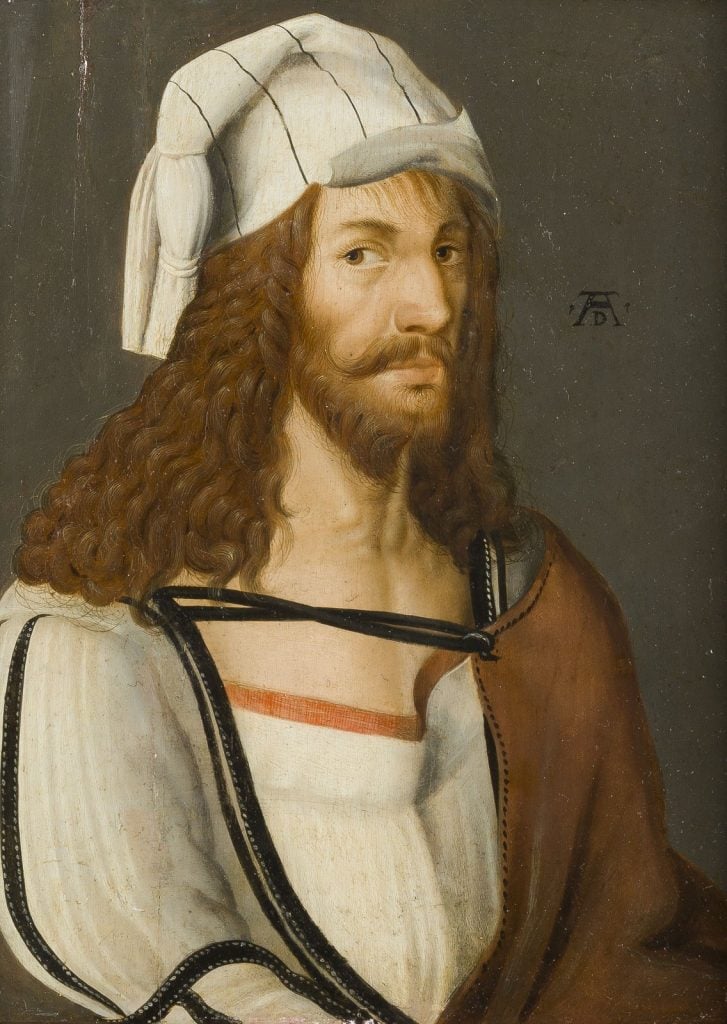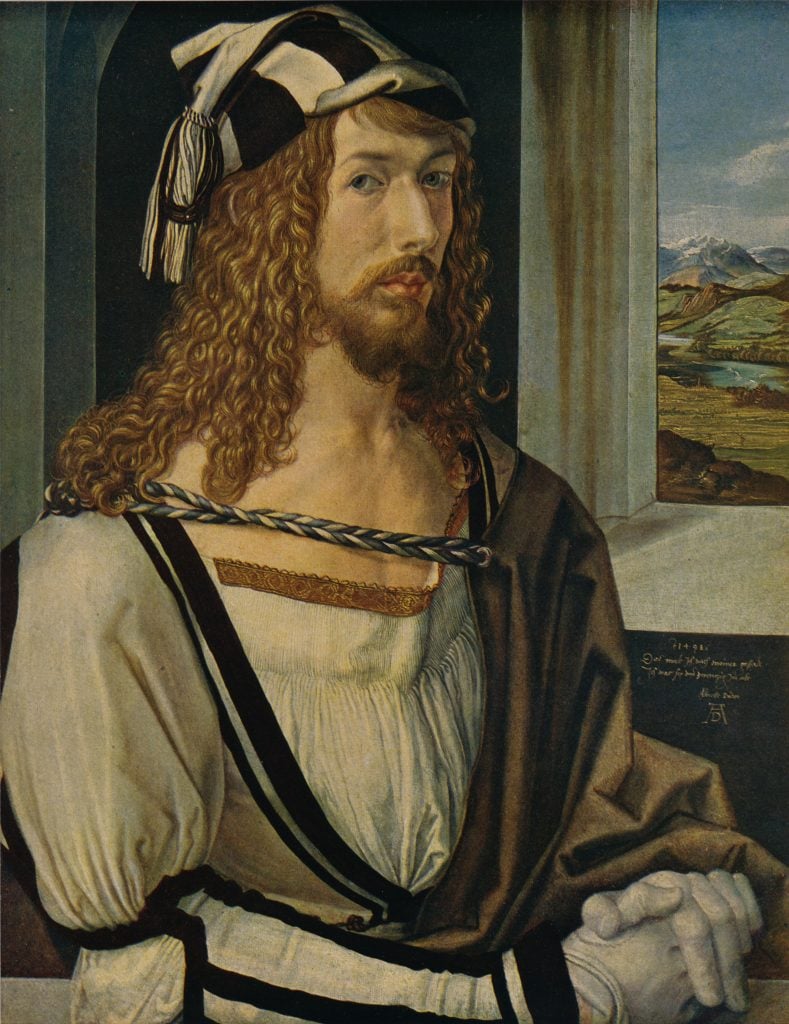Art World
A Dürer Self-Portrait Just Smashed its Estimate at Auction. But Is It Really a Dürer Self-Portrait?
One expert compares the piece—unfavorably—to a similar work at the Prado.

One expert compares the piece—unfavorably—to a similar work at the Prado.

Brian Boucher

Either a buyer at the Düsseldorf auction house Hargesheimer just got the best deal ever on an incredibly rare self-portrait by Albrecht Dürer, or they paid what may be a reasonable price for a painting that is somewhat similar to a famed work by the German Renaissance master.
The piece more than quadrupled its estimate of €6,000 (about $6,700), fetching €26,000 (about $28,900) in a sale of fine art, antiques, and jewelry that took place Sept. 11–14. It was the eighth-priciest lot in the sale, outpaced by, among other works, some Byzantine icons and a landscape by the 17th-century Dutch master Aelbert Cuyp.
The auction house billed the work as boasting an impressive provenance, having passed through the collections of the Duke of Buckingham at Stowe House, the English banker Sir Thomas Baring of Straton Hall, and a Lord Franton of London, before being sold in 1945 from an “Old Rhenish private collection.”
Attesting to its journey through time, the panel has two stickers on its backside, one from James Bourlet and Sons, of Middlesex, England, which offered services including framing, and another from W. Freeman and Son, picture restorers in London.
But most important is a paper label that reads, according to the house, “Portrait of Albrecht Dürer by himself.”
Experts take exception with that.
It seems collectors need Old Master expertise more than ever….
“”Albrecht Dürer: Self Portrait””
Sold hours ago for 26.000 € (!!?) against an estimate of 6-12k (??) at Hargesheimer ☠️☠️☠️ pic.twitter.com/7Y0QMDCR00
— KT 🦉 (@KTonArt) September 14, 2024
“It seems collectors need Old Master expertise more than ever,” Berlin advisor Kolja Thurner said in a post on X, juxtaposing the Hargesheimer panel with a self-portrait that hangs in the Prado. Referring to an online Chinese marketplace that offers deeply discounted goods, he added, “For those who don’t know what’s going on: This is what you get when you order Dürer on Temu. The painting is clearly an interested yet not… quite convincing free copy after Dürer’s famous Self-Portrait at 28 in the Prado.”
The Hargesheimer work is, in broad strokes, comparable to the one at the Prado. It shows the subject in a similar white robe and brown cape, with long, curly hair, a wispy beard, and a floppy black and white hat.
But there are crucial differences. The face bears none of the androgynous quality that makes Dürer’s countenance so distinctive. While Dürer painted his own fingers clasped in the foreground, the Hargesheimer work entirely skips the hands (which are notoriously difficult to depict, as AI image makers made plain).
And while Dürer painted himself in front of a window looking out onto a landscape, the Hargesheimer panel has the subject in front of a flat gray wall, marked only with the artist’s characteristic AD monogram.

Albrecht Dürer, Self-portrait at 28 (1498). Photo: The Print Collector/Getty Images.
In any case, the buyer certainly paid a lot less than what others have shelled out for Dürers: the artist’s auction record, set at Sotheby’s London in 2018 for the circa 1520 painting Portrait of a Man Against a Green Background, is $1.5 million.
Hargesheimer did not respond to inquiries about the painting.
Consulted via email by Artnet News, another expert agreed with Thurner.
“It is inconceivable that this painting could be by Dürer,” said New York Old Master dealer Robert Simon. “But it is on panel and looks like it has some age, so I suspect it could be a work by one of the artists of the Dürer revival at the end of the 16th and beginning of the 17th centuries. Artists such as Georg Gärtner (Elder and Younger), Jobst Harrich, and several others both copied Dürer’s work and emulated it.”
It’s possible the customer knew what they were getting, Simon pointed out.
“Perhaps the buyer had such an artist in mind and was not thinking that the painting was by the master,” he said. “In any case, I think there is a very happy consignor out there!”